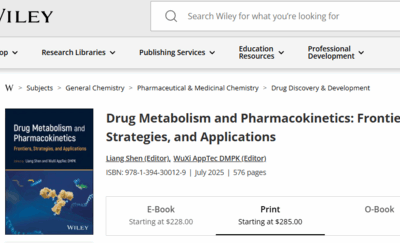Ion channel inhibition is a crucial tool in the fight to prevent and treat many conditions, from irregular heart rhythms to epilepsy and cancers. It is also extremely important to developers looking to test the safety of drug candidates. However, the methods of testing ion channel inhibitors are complex, and sponsors must ensure they’re accurate and reliable.
In February 2022, the pharmaceutical industry adopted ICH E14/S7B Q&As, which meant paying more attention to best practice considerations and CiPA recommendations. WuXi AppTec recently carried out testing to validate CiPA multi-ion channel inhibition assays and ensure they can more accurately estimate proarrhythmic risk in patients and the potential effects on cardiac action potential.
What are ion channel inhibitor assays used for in drug development?
Drug developers use ion channel inhibitor assays to ascertain how drug candidates affect the heart. This study is most commonly conducted using a test on the Human Ether-à-go-go Related Gene (hERG) potassium channel.
These tests also make sure that developers properly understand drug effects, particularly when developing therapeutics for arrhythmias or epilepsy, when they can determine that the correct ion channels are targeted. They can also ensure any off-target effects are adequately understood.
The hERG channel is responsible for the potassium current in the heart, which helps to repolarize the cardiac action potential. This process enables the proper timing of heartbeats. Inhibiting the hERG channel can lead to a prolonged QT interval on an ECG, which can mean an increased risk of potentially fatal arrhythmia. Because of this, testing for hERG inhibition is a crucial stage in drug development and safety assessments.
Why are multi-ion inhibition assays important?
Ion channels help regulate the many signaling pathways in our cells, and multiple ion channels tune the electrical signals that make a variety of cellular functions work. Because they’re so important to cells, ion channels are often targeted by drugs but also subject to off-target drug effects. That means assessing how drugs affect ion channel function is important for drug development and patient safety.
Currently, to assess drugs’ proarrhythmic potential, developers evaluate their effects on the hERG ion channel and the in vivo QT interval. However, these assays are sometimes considered to be overly sensitive, which can lead to some drugs with huge potential being prevented from reaching patients. Additionally, some believe the signal hERG ion channel does not give a full picture of what is happening in the heart.
Regulators launched the Comprehensive in Vitro Proarrhythmia Assay (CiPA) initiative in July 2013. It aims to improve the accuracy and reduce the cost of predicting cardiac liability.
The goal was based on three pillars:
- Compounds will be profiled against a selection of human ventricular ion channels.
- The in vitro data will be used in an in silico model of a human potential to provide a proarrhythmic risk classification.
- Compounds will be tested using human-induced pluripotent stem cell-derived cardiomyocytes to confirm the risk classification.
The CiPA method examines how a drug affects several important ion channels in the heart, including CaV1.2 and NaV1.5. This allows researchers to gather more information on the drug’s effects on the heart and gain a broader understanding of the potential for arrhythmias and other cardiac-related side effects. By assessing these channels, researchers can predict a drug’s proarrhythmic risk more accurately, leading to safer drug development and more informed clinical decisions.
Validating multi-ion channel inhibition assays
After the 2022 adoption of ICH E14/S7B Q&As, an increasing number of sponsors requested the multi-ion inhibition assays, following the best practice considerations for submission. With this trend in mind and the adoption of the ICH guideline, WuXi AppTec researchers initiated and completed the validation for hERG, CaV1.2, peak, and late NaV1.5 currents.
A manual patch-clamp system was used as the platform for the tests, and the recording temperature was near physiological temperatures of between 35 and 37°C for the assays. All the results were comparable with the data reported in the literature, indicating that the multi-ion channel inhibition assays were well validated.
Overall, the study found that when following the best practice considerations, CiPA multi-ion channel inhibition assays can minimize variations between labs, help evaluate potential effects on the cardiac action potential and increase the accuracy of estimates regarding the risk of proarrhythmic risk in patients.
A final word
Ion channel inhibitor assays ensure new drug candidates are safe for patient use by making sure their effects on the heart are well established. The latest guidance advises developers to take a more detailed and thorough approach using the CiPA guidelines.
WuXi AppTec’s research validates the CiPA approach of multi-ion channel inhibition assays, assuring developers that this approach increases accuracy. This is good news for drug sponsors and even better news for patients receiving safer drugs through a more efficient development process.
As a global company with operations across Asia, Europe, and North America, WuXi AppTec provides a broad portfolio of R&D and manufacturing services that enable the global pharmaceutical and life sciences industry to advance discoveries and deliver groundbreaking treatments to patients. Through its unique business models, WuXi AppTec’s integrated, end-to-end services include chemistry drug CRDMO (Contract Research, Development and Manufacturing Organization), biology discovery, preclinical testing and clinical research services, helping customers improve the productivity of advancing healthcare products through cost-effective and efficient solutions. WuXi AppTec received an AA ESG rating from MSCI for the fourth consecutive year in 2024 and its open-access platform is enabling around 6,000 customers from over 30 countries to improve the health of those in need – and to realize the vision that “every drug can be made and every disease can be treated.”


